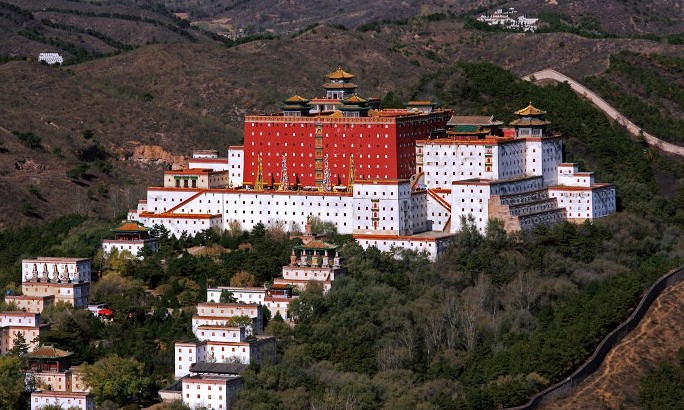Putuo Zongcheng monastery was built in 1767 by Emperor Qianlong. It was built primarily to accomodate visits by the Dalai Lama of Tibet.
The Putuo Zongcheng is an ensemble of several different buildings, all of which are constructed along a natural hillock to the north of Jingshan mountain where the Imperial Palace is located. Although modelled on the Potala palace, Putuo Zongcheng is a hybrid of Tibetan influences and traditiona Chinese architecture.
The buildings are modelled on the design of the Potala palace in Lhasa, the residence of the Dalai Lama until the mid-twentieth century. The name of the temple complex roughly translates as Potala (Mount Putuo) in Tibetan.
The lower portions of the monastery, including the stele pavilion and the surrounding gate houses are arranged in a quadrangle. In contrast, the rest of the temple buildings are scattered around the hill, with the main building sitting on the summit as a crown reflecting a common practice used in Tibetan architecture. Which is to use architecture to accentuate pre-existing physical features such as ridge lines and summits.
